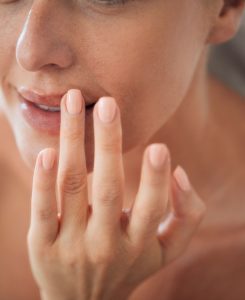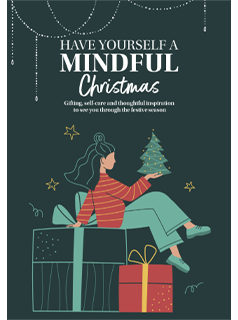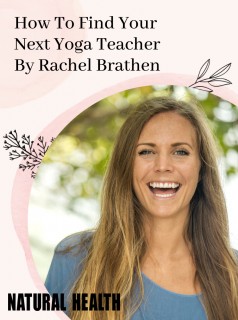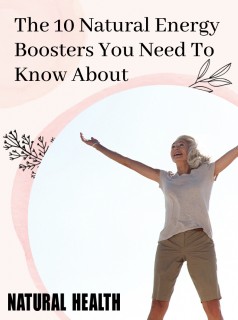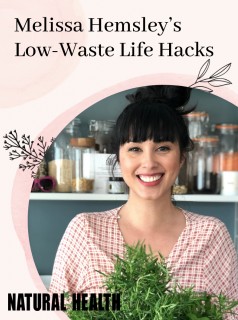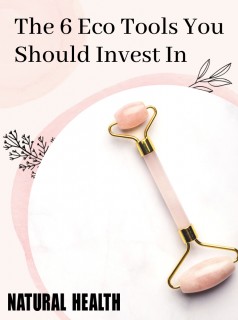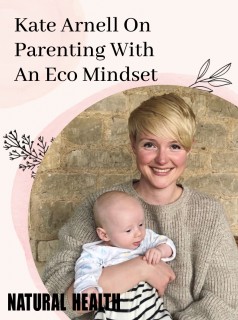The key to getting the maximum benefit from your yoga practise is to make sure that you’re doing it properly, says Natural Health’s resident yoga expert Sue Fuller
The key to getting the maximum benefit from your yoga practise is to make sure that you’re doing it properly, says Natural Health’s resident yoga expert Sue Fuller
Yoga will make an incredibly positive impact on your life, providing it is practised with the correct focus and intent. Let me explain. If the body is just moved without focus through a series of postures then your yoga practice is no different to an exercise class. However if you move mindfully, whilst maintaining the connection between breath and movement and are able to observe and witness all sensations and experiences that each posture or technique presents, then you are experiencing and engaging in a yoga practice.
Yoga is so much more than just a physical practice
But don’t despair. Everyone has to start their yoga journey somewhere and it is in no way negative to just practise the postures, as you become more familiar with your practice do remember to bring your awareness to any sensations experienced and move with care and precision.
By practising yoga mindfully it is possible to develop a strong relationship with yourself, and it is through this relationship that your will be able to listen to your body and meet your current needs and requirements. You will also be able to identify when you are feeling out of sorts or unbalanced.
Try the following simple postures to apply to some of the above techniques:
BADDHA KONASANA: The Cobbler
Begin by sitting with a straight spine and the soles of your feet together. Become aware of the connection between your sitting bones and the floor, then work to draw up your lower abdominal muscles maintaining the connection between your sitting bones and the floor. Take your time to feel that you are growing up out of the crown of your head, feel the length of your spine as you maintain a connection between your sitting bones and the earth. Now take your focus to the sides of your body, both sides of your body from your underarms to the floor should be equal in length, also notice the position of your torso, make sure that it is not rotating and it is square to your front. Now notice your knees, both knees should be releasing equally towards the floor. As you hold the posture breathing slowly in and out through your nose continue to scan through all of these areas to ensure that the body remains in a state of balance.
TADASANA: The Mountain
Stand with a small space between the insides of your feet, make sure that the outside edges of your feet are parallel, your weight should be distributed evenly through the soles of your feet. Become aware of the connection between your feet and the earth, maintain this connection as you draw up your lower abdominal muscles and grow out of the crown of your head. Take your awareness to your shoulders and release both shoulders equally away from your ears, as you do so lift the lower abdominal muscles a little more. Now notice your torso and make sure that it is square to the front. Scan through your body looking for imbalances and then work with your exhalations to make any subtle adjustments needed to rebalance the body and feel energy travelling freely around it.
VRKSASANA: The Tree
Starting from tadasana, transfer all of your weight onto your right foot, become aware of the connection between the foot and the earth, distribute your weight evenly through the sole of the foot. Draw up the lower abdominal muscles and grow out to the crown of your head then soften your shoulders away from your ears. Lift the left foot and place the sole of the left foot against the right inner thigh with the left knee out to the side and the toes pointing down. Now bring your hands to a prayer position in front of your chest, push your palms together with equal pressure from each side, make sure that the torso is not rotating and that both sides of the body are equal in length. Hold for ten to twenty complete breaths before changing sides.
VIRABHADRASANA II: Warrior 2
into
VIRABHADRASANA I: Warrior 1
Stand with your feet leg length apart. Imagine a clock face on the floor in front of you. The left foot is facing 12 o’clock and your right foot facing 2 or 3 o’clock. Your hips and torso are facing forward and your arms are level with your shoulders and feel that you are running energy out through the tips of your fingers and then soften your shoulders away from your ears. Bend the right knee and turn your head to look to the right whille drawing up the lower abdominal muscles. Notice the connection between your feet and the earth and feel as though you are growing out of the crown of your head, whille continuing to bend the right knee. Hold for ten slow complete breaths in and out through your nose.
From virabhadrasana II turn your torso 90 degrees to the right and lift your arms up above your head forming a prayer position with your hands. Be aware of the connection between your feet and the earth, work to soften the shoulders away from the ears and become aware of all sensations experienced whilst holding this posture as you continue to draw up the lower abdominal muscles. Hold for ten slow controlled breaths in and out through the nose and then repeat both asanas on the other side.
Here are a few points to remember:
Yoga is non-competitive, do not compete with others or yourself.
Wear loose comfortable clothing and remove any distracting pieces of jewellery.
Yoga is a natural path, do not set yourself goals or targets, you will progress when and if the time is right.
Yoga is so much more than just a physical practice.
Yoga has been practised for over three thousand years for a good reason.
Yoga will filter into your life and will help you through times of change and challenge, to utilise this to the best of your ability you must remain focused through your sessions.
Your homework
Try these tips to help you get the most out of your yoga practice
Prior to your practice always take a moment to sit in a simple meditation posture with the ankles crossed or lay in savasana (the corpse). Slowly scan through your body and become aware of all sensations experienced. This allows you to connect with your body, calm your mind and will bring awareness to any aches, pains and areas of stiffness. Make sure that throughout your yoga practice the mind is engaged in the activity that the body is performing. This will ensure that your alignment is good and prevent any injuries, it also helps to connect body and mind (as all too often we can be doing one thing with our body and our mind is occupied with thoughts of an entirely different nature). Never force the body into postures or stretches. Listen to your body; if you feel pain or discomfort relax a posture. Become aware of any resistance and your personal limitations during each practice.
Sue Fuller is a leading yoga teacher with a range of over 40 audio yoga classes. To celebrate the launch of Wellbeing World Online, Sue is giving all readers a 25% discount on everything in store. Please enter the code NH25 at the checkout wellbeingworldonline.com
Article by
Sue Fuller
Yoga Teacher
Sue Fuller is a leading yoga teacher, writer and co-founder of wellbeingworldonline.com A leading yoga teacher for over 15 years, Sue trained with the Sivananda organisation in Neyyar Dam, India...
Discover more
Article by
Sue Fuller
Yoga Teacher
Sue Fuller is a leading yoga teacher, writer and co-founder of wellbeingworldonline.com A leading yoga teacher for over 15 years, Sue trained with the Sivananda organisation in Neyyar Dam, India...
Discover more





